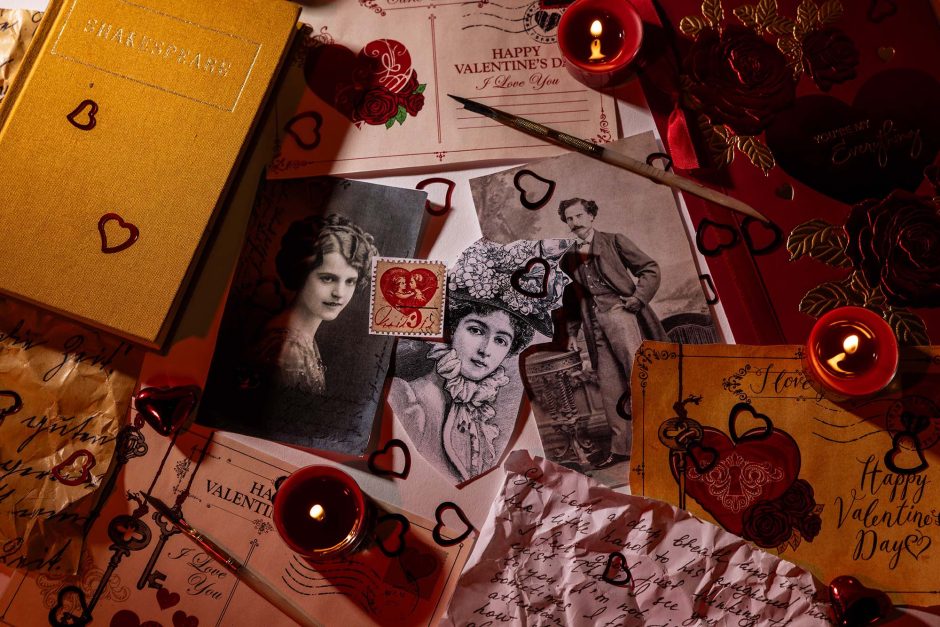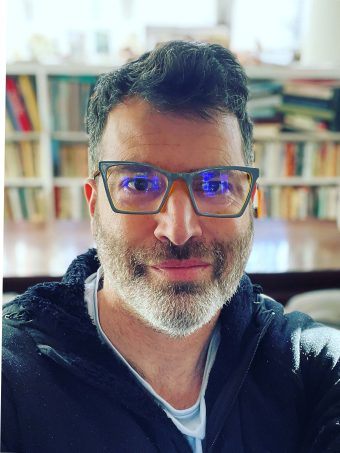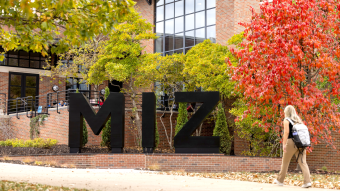
Feb. 11, 2025
Contact: Sara Diedrich, diedrichs@missouri.edu
Photo by Sophia Scheller
Love it or hate it, Valentine’s Day is big business – and you can thank the likes of Edgar Allan Poe and other Romantics for contributing to the hype.
University of Missouri Professor John Evelev has looked at the evolution of Valentine’s Day as part of broader research exploring the cultural history of New York’s literary society in the 1830s and 1840s. He’s been especially interested in studying artistic gatherings hosted by Anne Charlotte Lynch — a graceful, dark-haired poet and educator synonymous with literary sophistication.
It was her annual Valentine’s Day parties — which became legendary for attracting the brightest creative minds — that captivated the public’s imagination, sparking a frenzy for poetic messaging.

“Valentine’s Day almost immediately became a commercial holiday,” said Evelev, who teaches English in Mizzou’s College of Arts and Science and is a scholar of mid-19th-century U.S. literature. “What fueled its rapid growth was the production of Valentine’s Day cards paired with an increasingly robust postal system.”
An affair to remember
Lynch’s soirées were a spectacle over which the public swooned. Situated near what would later become Washington Square Park, her home was a beacon for New York’s burgeoning artistic and literary communities. At a time when wealthy families were escaping the chaos of downtown Manhattan for the quieter streets of Greenwich Village, Lynch’s gatherings offered a haven for conversation, music and poetry.
By 7 p.m., her guests would arrive in horse-drawn omnibuses or private carriages. They mingled over tea and cookies, listened to poetry recitation and danced to quadrilles and polkas. The gatherings typically attracted about 35 guests, but it wasn’t uncommon for as many as 90 to spill up the staircase and out the front door.
One of the most intriguing guests at the gatherings was Poe, whose time at these events was fleeting, largely because of his illicit “poetic affair” with fellow poet Frances Sargent Osgood, a married woman. Poe and Osgood shared a series of flirtatious poems, some of which were made public in various newspapers, attracting significant attention. At the time, Poe was also married to Virginia Clemm Poe, who was gravely ill with tuberculosis.
Poe’s famous “A Valentine” is an acrostic poem in which Osgood’s first name is cleverly hidden between the lines and text. The affair came to light when another guest, who had taken an interest in Poe, discovered “indiscreet” letters exchanged between the two poets. This revelation caused a stir among the social elite, leading to Poe’s removal from the guest list by the hostess. Poe died in 1849, just three years later.
Sparks among skeptics
Even in the 1840s, doubts emerged about the authenticity of Valentine’s Day and the sentiments it inspired, in both in public and private exchanges. Despite the skepticism, many saw – and still see – the holiday as an opportunity to spark intimate relationships.
“There was always a feeling that Valentine’s Day was cheap and commercialized, but it became a way for people to spark romance,” Evelev said. “My interest lies in that tension between what is real and what is commercial and how they tie into the literary community.”
Were these literary elite a real community or were they simply publicizing themselves to gain more prestige?
“I think it was more about creating an aura of genius,” Evelev said. “It was more about creating a brand for yourself.”
Regardless, their literary escapades helped shape the multi-billion Valentine’s Day industry we all know and love — or hate.



